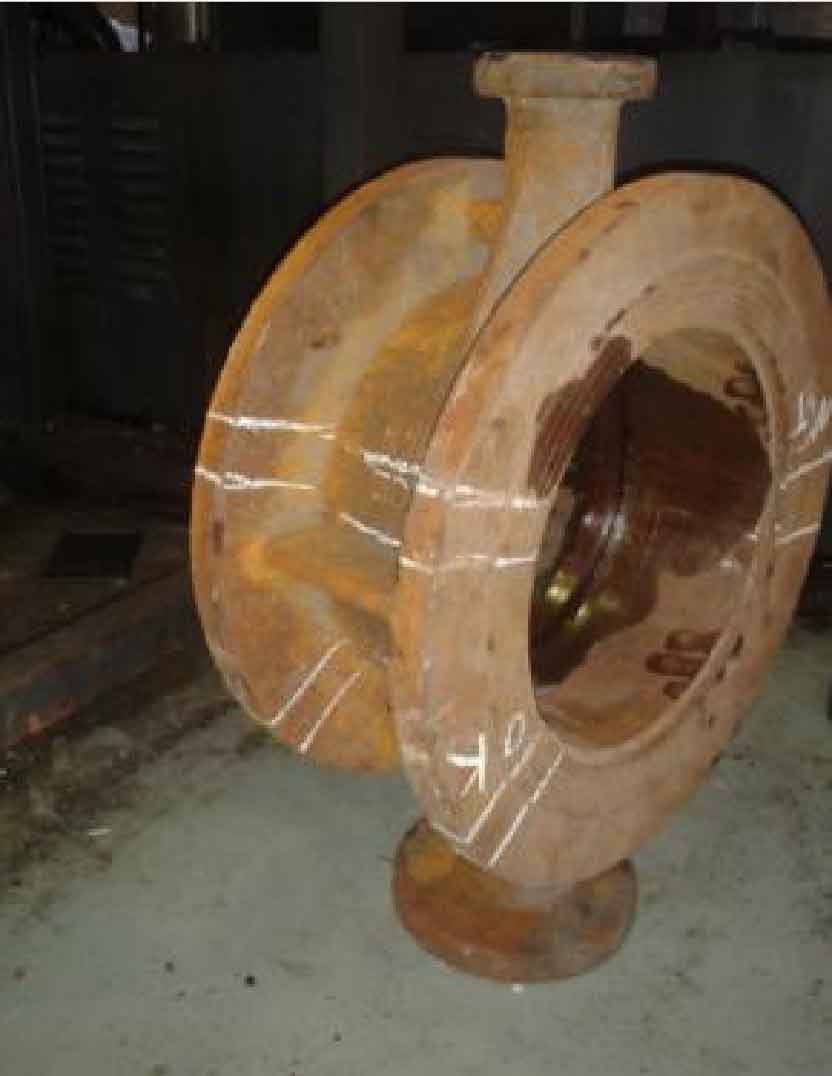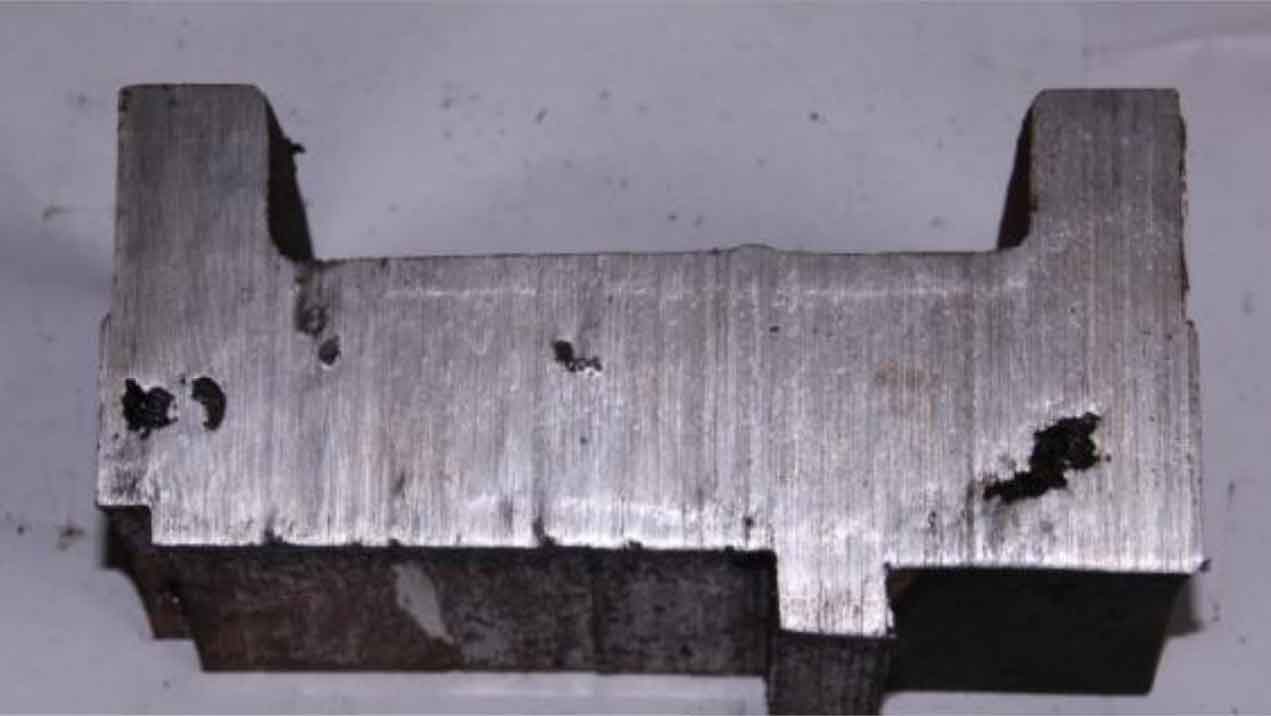The valve body lost foam casting process design produced by ZHY Casting refers to the process scheme of other similar castings successfully produced in the past, and the size of its gating system also refers to the traditional empirical method, resulting in poor air tightness of the valve body lost foam castings finally inspected, and the scrap rate of valve body lost foam castings has reached more than 60%. In order to intuitively understand the severity of the defects of the valve body lost foam casting, the kerosene leakage method was first used to check the compactness of the structure of the valve body lost foam casting. As shown in Figure 1, kerosene was dropped on one side of the inner boss of the valve body lost foam casting, and kerosene leakage was observed on the other side after leaving it for one afternoon. Therefore, the places with serious leakage of the valve body are dissected and analyzed. Through observation, it is found that there are visible shrinkage, porosity and air hole defects at the places with serious leakage, especially at the geometric hot joint connected between the large flange and the pipe body. As shown in Figure 2, the internal defect diagram of the geometric hot joint of the lost foam casting of the valve body is shown.
In order to reduce the production cost and improve the production efficiency, ProCAST simulation software is used to simulate and observe the filling and solidification process of the valve body lost foam casting, and analyze the causes of defects, so as to provide ideas for subsequent process improvement.
Using 3D modeling software ug8 0 conduct three-dimensional solid modeling on the valve body and the original process gating system to generate * X_ T format, and then import the procast2014 simulation software. After dividing the surface grid and volume grid of the valve body and gating system in the visual mesh interface, set the relevant process parameters in the visual cast interface, then visual cast analyzes and calculates in the background, and finally analyzes the simulation results in the visual viewer.


